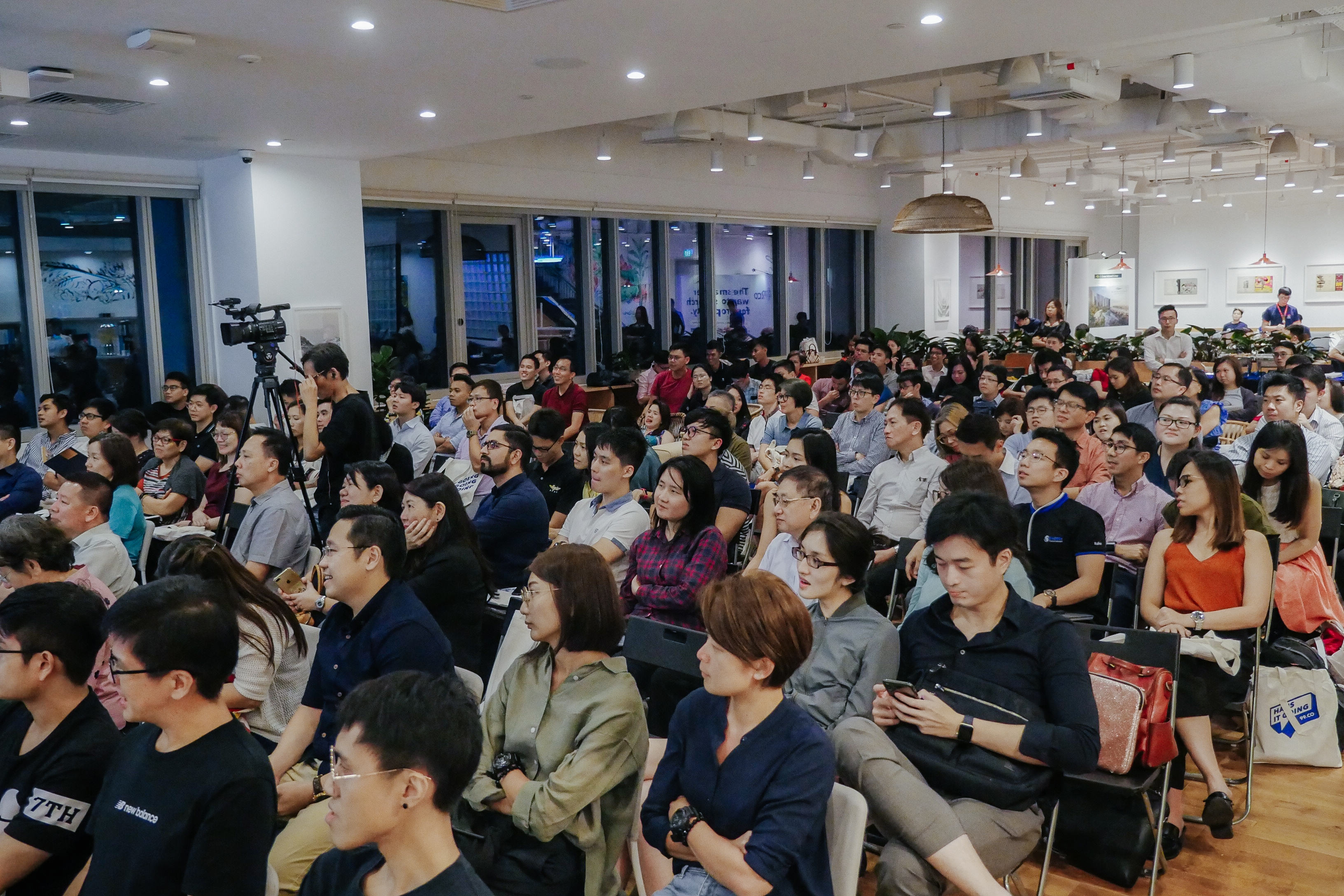The Urban Redevelopment Authority (URA) released today the real estate statistics for 3rd Quarter 20191.
PRIVATE RESIDENTIAL PROPERTIES
Private residential market at a glance:
 * Figures exclude Executive Condominium (ECs)
* Figures exclude Executive Condominium (ECs)
Prices and Rentals
Prices of private residential properties increased by 1.3% in 3rd Quarter 2019, compared with the 1.5% increase in the previous quarter.
Property Price Index of private residential properties

Prices of landed properties increased by 1.0% in 3rd Quarter 2019, compared with the 0.1% decrease in the previous quarter. Prices of non-landed properties increased by 1.3% in 3rd Quarter 2019, compared with the 2.0% increase in the previous quarter.
Prices of non-landed properties in Core Central Region (CCR) increased by 2.0% in 3rd Quarter 2019, compared with the 2.3% increase in the previous quarter. Prices of non-landed properties in Rest of Central Region (RCR) increased by 1.3%, compared with the 3.5% increase in the previous quarter. Prices of non-landed properties in Outside Central Region (OCR) increased by 0.8%, compared with the 0.4% increase in the previous quarter (see Annexes
A-1,
A-2 &
A-62).
Rentals of private residential properties increased by 0.1% in 3rd Quarter 2019, compared with the 1.3% increase in the previous quarter.
Rental Index of private residential properties
Rentals of landed properties decreased by 2.3% in 3rd Quarter 2019, compared with the 0.3% increase in the previous quarter. Rentals of non-landed properties increased by 0.4%, compared with the 1.4% increase in the previous quarter.
Rentals of non-landed properties in CCR decreased by 0.7%, compared with the 1.5% increase in the previous quarter. Rentals in RCR increased by 1.6%, compared with the 1.4% increase in the previous quarter. Rentals in OCR increased by 0.8%, compared with the 1.2% increase in the previous quarter (see Annexes
A-3 &
A-4).
Launches and Take-up
Developers launched 3,628 uncompleted private residential units (excluding ECs) for sale in 3rd Quarter 2019, compared with 2,502 units in the previous quarter (see
Annex C-1).
Developers sold 3,281 private residential units (excluding ECs) in 3rd Quarter 2019, compared with the 2,350 units sold in the previous quarter. (see
Annex D).
Number of private housing units launched and sold by developers (excluding ECs)
Developers launched 820 EC units for sale in 3rd Quarter 2019. 426 EC units were sold in the quarter (see
Annex F). In comparison, developers did not launch any EC units and sold 10 EC units in the previous quarter.
Resales and Sub-sales
There were 2,378 resale transactions in 3rd Quarter 2019, compared with the 2,371 units transacted in the previous quarter. Resale transactions accounted for 41.3% of all sale transactions in 3rd Quarter 2019, compared with 49.7% in the previous quarter (see
Annex D).
There were 104 sub-sale transactions in 3rd Quarter 2019, compared with the 45 units transacted in the previous quarter. Sub-sales accounted for 1.8% of all sale transactions in 3rd Quarter 2019, compared with 0.9% in the previous quarter (see
Annex D).
Number of resale and sub-sale transactions for private residential units (excluding ECs)
Supply in the Pipeline
As at the end of 3rd Quarter 2019, there was a total supply of 50,964 uncompleted private residential units (excluding ECs) in the pipeline with planning approvals
3, compared with the 50,674 units in the previous quarter (see Annexes
E-1 &
E-24). Of this number, 31,948 units remained unsold as at the end of 3rd Quarter 2019, compared with the 33,673 units in the previous quarter (see Annexes
B-1 &
B-2).
After adding the supply of 3,722 EC units in the pipeline, there were 54,686 units in the pipeline with planning approvals (see
Annex E-3). Of the EC units in the pipeline, 2,141 units remained unsold. In total, 34,089 units with planning approvals (including ECs) remained unsold, down from 35,538 units in the previous quarter.
Total number of unsold private residential units in the pipeline
Based on the expected completion dates reported by developers, 3,235 units (including ECs) will be completed in the last quarter of 2019. Another 5,750 units (including ECs) will be completed in 2020.
Pipeline supply of private residential units and ECs (with planning approvals) by expected year of completion
 Note: 5,229 private residential units and 855 executive condominiums were completed (i.e. obtained TOP) in 1Q-3Q2019.
Note: 5,229 private residential units and 855 executive condominiums were completed (i.e. obtained TOP) in 1Q-3Q2019.
Apart from the 34,089 unsold units (including ECs) with planning approval as at the end of 3rd Quarter 2019, there is a potential supply of 4,900 units (including ECs) from Government Land Sales (GLS) sites and awarded en-bloc sale sites that have not been granted planning approval yet. These comprise (a) about 4,400 units from awarded GLS sites and Confirmed List sites that have not been awarded yet, and (b) about 500 units from transacted en-bloc sale sites5.
Stock and Vacancy
The stock of completed private residential units (excluding ECs) increased by 278 units in 3rd Quarter 2019, compared with the increase of 863 units in the previous quarter. The stock of occupied private residential units (excluding ECs) increased by 1,095 units in 3rd Quarter 2019, compared with the increase of 584 units in the previous quarter. As a result, the vacancy rate of completed private residential units (excluding ECs) decreased to 6.1% as at the end of 3rd Quarter 2019, from 6.4% in the previous quarter (see
Annex E-1).
Stock and vacancy of private residential units (excluding ECs)
Vacancy rates of completed private residential properties as at the end of 3rd Quarter 2019 in CCR, RCR and OCR were 8.2%, 6.0% and 5.3% respectively, compared with the 7.8%, 6.4% and 5.7% in the previous quarter (see
Annex E-4).
OFFICE SPACE
Office market at a glance:
Prices and Rentals
Prices of office space decreased by 3.9% in 3rd Quarter 2019, compared with the 0.9% increase in the previous quarter (see
Annex A-1). Rentals of office space decreased by 0.6% in 3rd Quarter 2019, compared with the 1.3% increase in the previous quarter (see Annexes
A-3 &
A-5).
Property Price Index of office space in Central Region
Rental Index of office space in Central Region
Supply in the Pipeline
As at the end of 3rd Quarter 2019, there was a total supply of about 738,000 sq m GFA of office space in the pipeline, compared with the 732,000 sq m GFA of office space in the pipeline in the previous quarter (see Annexes
E-1 &
E-2).
Pipeline supply of office space
 Note: 57,333 sq m of office space was completed (i.e. granted TOP) in 1Q-3Q2019
Note: 57,333 sq m of office space was completed (i.e. granted TOP) in 1Q-3Q2019
Stock and Vacancy
The amount of occupied office space increased by 71,000 sq m (nett) in 3rd Quarter 2019, compared with the increase of 35,000 sq m (nett) in the previous quarter. The stock of office space decreased by 4,000 sq m (nett) in 3rd Quarter 2019, compared with the increase of 7,000 sq m (nett) in the previous quarter. As a result, the island-wide vacancy rate of office space declined to 10.6% as at the end of 3rd Quarter 2019, from 11.5% as at the end of the previous quarter (see Annexes
A-5 &
E-1).
Stock and vacancy of office space
RETAIL SPACE
Retail market at a glance:
Prices and Rentals
Prices of retail space increased by 1.1% in 3rd Quarter 2019, compared with the increase of 0.4% in the previous quarter (see
Annex A-1). Rentals of retail space increased by 2.3% in 3rd Quarter 2019, compared with the decrease of 1.5% in the previous quarter (see Annexes
A-3 &
A-5).
Property Price Index of retail space in Central Region
Rental Index of retail space in Central Region
Supply in the Pipeline
As at the end of 3rd Quarter 2019, there was a total supply of 288,000 sq m GFA of retail space from projects in the pipeline, compared with the 320,000 sq m GFA of retail space in the pipeline in the previous quarter (see Annexes
E-1 &
E-2).
Pipeline supply of retail space
 Note: 143,139 sq m of retail space was completed (i.e. granted TOP) in 1Q-3Q2019.
Note: 143,139 sq m of retail space was completed (i.e. granted TOP) in 1Q-3Q2019.
Stock and Vacancy
The amount of occupied retail space increased by 29,000 sq m (nett) in 3rd Quarter 2019, compared with the increase of 74,000 sq m (nett) in the previous quarter. The stock of retail space increased by 16,000 sq m (nett) in 3rd Quarter 2019, compared with the increase of 18,000 sq m (nett) in the previous quarter. As a result, the island-wide vacancy rate of retail space decreased to 7.5% as at the end of 3rd Quarter 2019, from 7.7% as at the end of the previous quarter (see Annexes
A-5 &
E-1).
Stock and vacancy of retail space
More detailed information on the price and rental indices, supply in the pipeline, stock and vacancy rates of the various property sectors can be found in the Real Estate Information System (REALIS), an online database of URA.
























